The Value of Functional Strength Training for Older Adults
It’s no secret that we humans start to lose strength as we get older. For that, we can thank two different processes that are normal parts of aging: sarcopenia and dynapenia.
- Sarcopenia is the natural reduction in muscle mass (muscle size) with age. Adults actually start to lose 1-2% of muscle mass per year after age 50.
- Dynapenia is the age-related loss of muscle strength. While it is related to sarcopenia, dynapenia encompasses other factors related to strength, such as the nervous system and muscle force production. Adults over the age of 50 start to see a 15% decrease in strength every 10 years.
Not to worry, though! Just because strength loss is a natural part of the aging process does not mean we can’t work on getting stronger. In fact, it means strength training is even more important for older adults; it is necessary for maintaining bone and muscle health as well as maintaining desired levels of activity. Although it can sound a little daunting for individuals who are not familiar with resistance training, getting stronger can start with just bodyweight exercises. Here are some basic, yet essential, exercises and why they are important for everyday functional movements.
Lunge
(Arguably the most important exercise for aging and older adults)
We need to be able to do this movement for:
- Going up/down stairs
- Walking up/down hills
- Transferring to/from the floor
- Kneeling
Variations:
- Static lunge/split squat:
- Build up neuromuscular control and balance
- can hold on to the counter if needed
- Mini lunge:
- Starts with partial depth if full lunge is too challenging
- can kneel on an elevated cushion or foam pad for assistance
- Reverse lunge:
- progressive balance challenge
- Half kneel to stand:
- Final progression for the full depth of floor-to-stand transfer
- Starts with partial depth if full lunge is too challenging
- Build up neuromuscular control and balance
A lot of people young and old are intimidated by this exercise, and “bad knees” are often to blame, but your PT can help you work through these progressions if you have concerns.
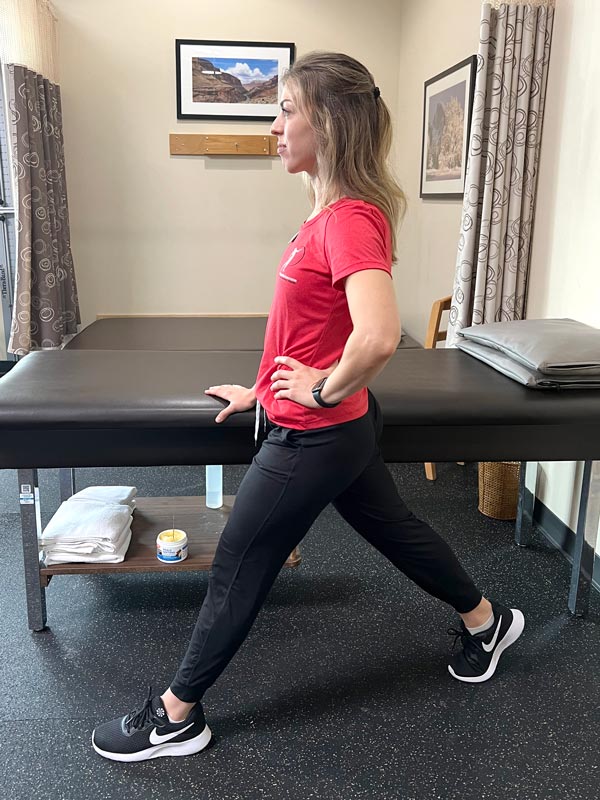
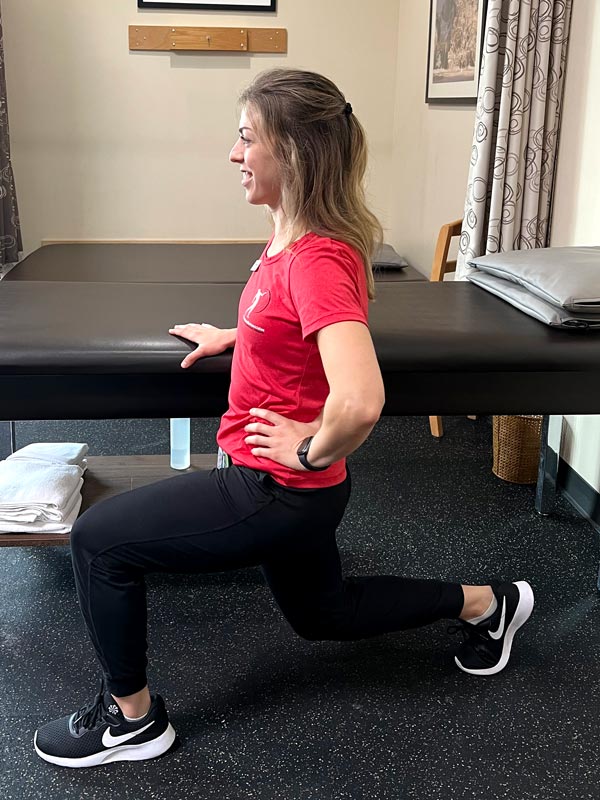
Squat
We need to be able to do this movement for:
- Getting in/out of a chair
- Using a toilet
- Stooping
- Lifting items (including grandchildren) from the floor or low surface
Variations:
- Chair squat or sit to stand:
- Good starting movement for muscular activation
- variable depth, can progress to just a tap with minimal sitting
- Heels elevated:
- Helpful when stiff ankles limit mobility
- Goblet squat:
- Start to add progressive load
- helps maintain good trunk control,
- similar to lifting everyday items
- Back squat or front squat with barbell/dumbbells:
- Depends on goals!
- Start to add progressive load
- Good starting movement for muscular activation
As with lunges, it is not uncommon for people to complain about their knees when doing squats. Think about sitting back with the hips instead of sinking forward with the knees (knees stay behind the toes) but talk to your PT if you need help getting it right.
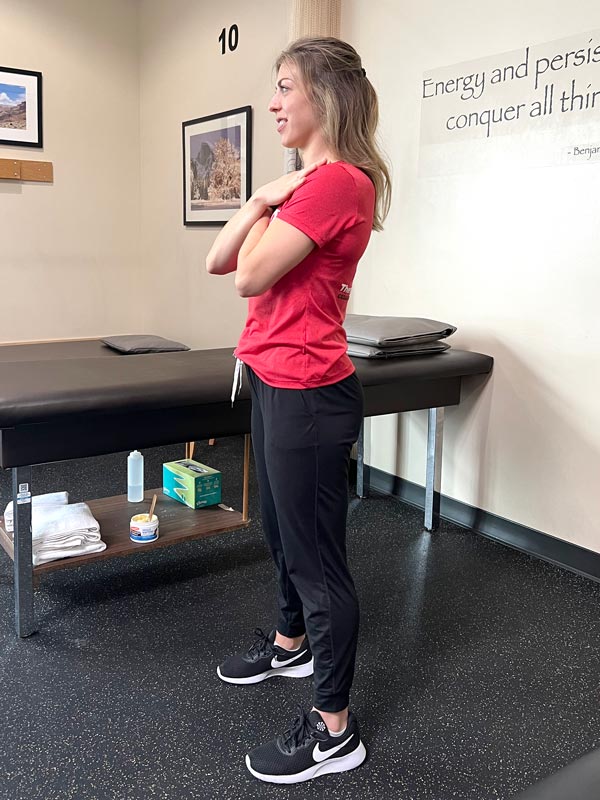

Hinge/Deadlift
We need to be able to do this movement for:
- Bending over to lift items (including grandchildren) up from the floor
- Housework
- Yardwork
Variations:
- Dowel hinge:
- Good for learning correct form, hold a broomstick or dowel behind your back and maintain three points of contact (back of head, upper back, and sacrum)
- Sumo deadlift:
- Wider stance means less trunk/hip motion is necessary
- Stiff leg deadlift or Romanian deadlift:
- Only works the top of the hinge motion for better coordination, can place a hand on a table for balance assist
Good flexibility of hamstrings and hip flexors is essential for proper form to avoid hurting your low back. Talk to your PT about how to do this exercise properly if you are unsure!
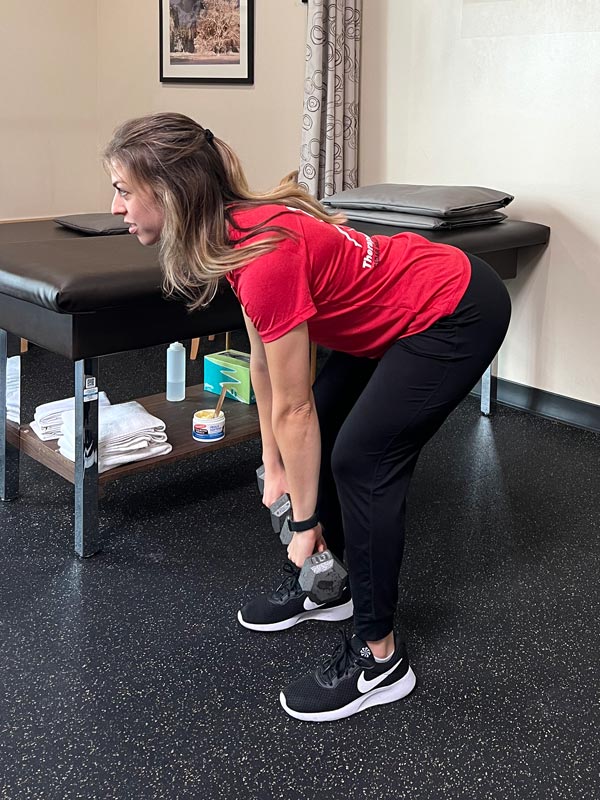

Pushing/Overhead Press
We need to be able to do these movements for:
- Opening/closing doors
- Vacuuming
- Pushing a shopping cart
- Pushing a wheelchair
- Lifting into overhead cabinets


Variations:
- Wall pushup, counter pushup, or knee pushup:
- Decreases amount of resistance helps to perfect form first
- Chest press:
- Uses weights to build chest strength without worrying about trunk control
- Narrow grip overhead press:
- Generally easier for the shoulders
- Diagonal press:
- Most similar to every day reaching,
- easier for limited shoulder mobility
If overhead exercises bother your neck, you may have some stiffness in your upper back that is limiting your shoulder motion and thus causing you to shrug. Consult your PT about how you can get your form corrected.
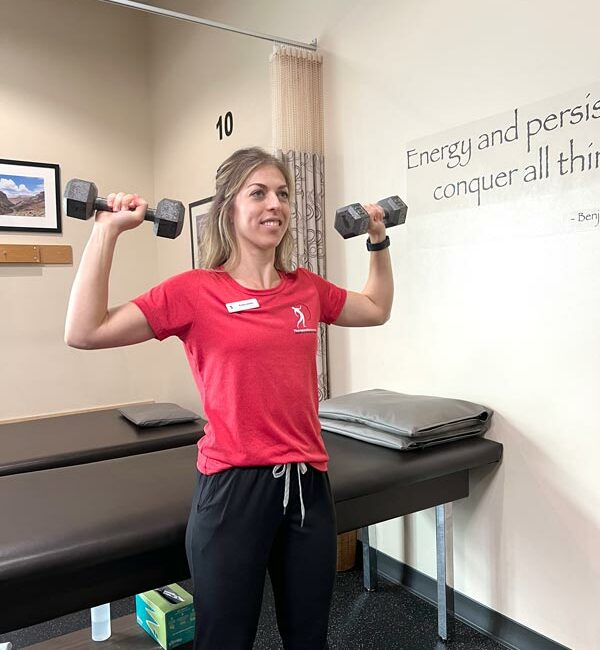

Pulling/Row
We need to be able to do this movement for:
- Opening/closing doors
- Vacuuming
- Mopping
- Pulling a chair out
- Pulling a shopping cart out of the corral
- Picking up objects up
- Carrying groceries/grandchildren
Variations:
- Single arm row:
- Can use your other arm on a bed or table to support yourself in the forward trunk position
- Resistance band row:
- Able to sit or stand upright
This exercise engages your entire back, and gently squeezing shoulder blades together is key!
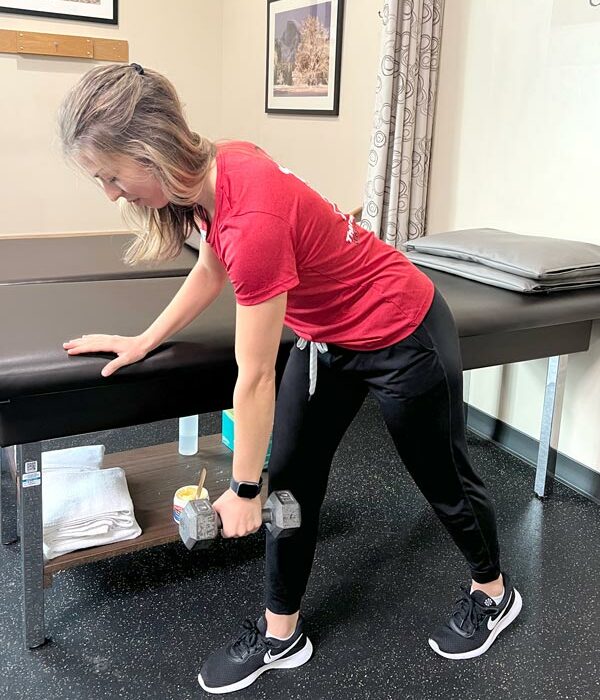

Bonus exercise – Jumping!
If you are an older adult, you might be reading this and wondering if you can even remember the last time you jumped. Why not try today? Getting your feet off the ground makes bones stronger and promotes muscular power (speed of contraction) necessary for normal and safe walking. You can always start with modifications like holding onto the counter for upper extremity support, or quickly hopping side to side from one foot to the other.


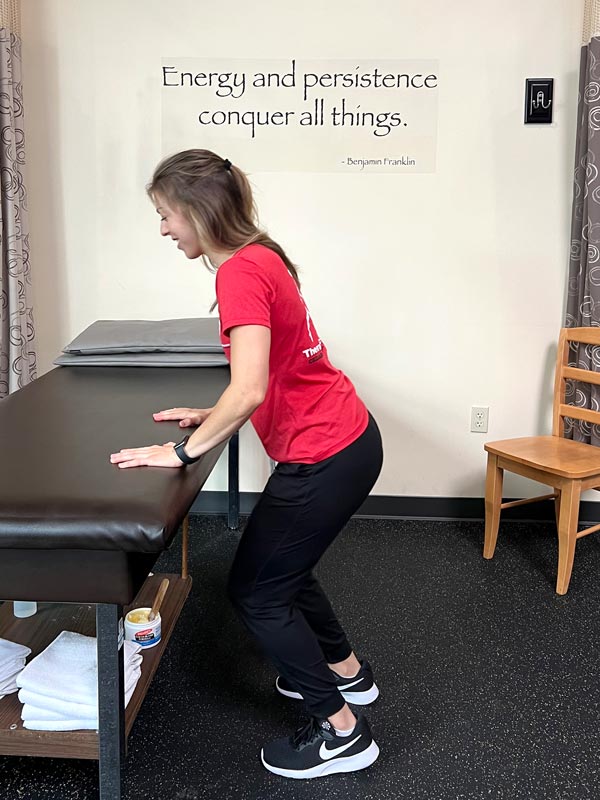
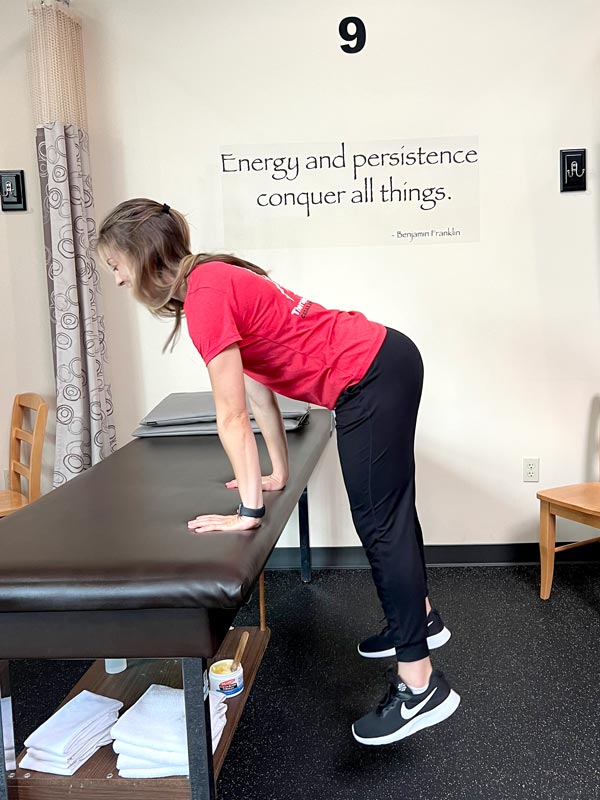
Beyond Strength Training – Basic Mobility Exercises
Joint stiffness and muscle tightness also comes naturally with age, and some of the most common problem areas we see as physical therapists are:
- Trunk rotation/thoracic extension:
- Necessary for upright trunk in gait and overhead reaching
Exercise to try: rising sun

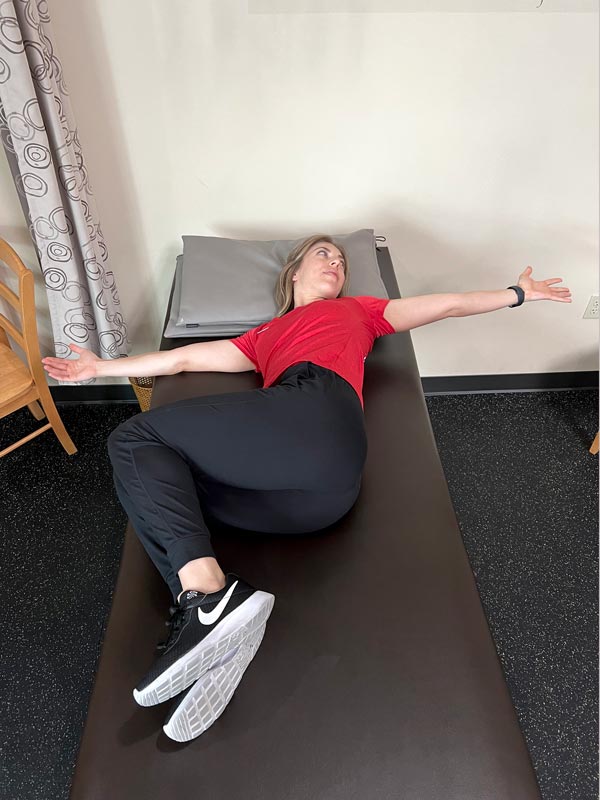
- Hip extension:
- Necessary for upright trunk in gait, gluteal strength
Exercise to try: standing hip flexor stretch
- Ankle dorsiflexion:
- Necessary for picking up feet in gait and going up stairs/curbs without tripping
Exercise to try: standing calf stretch


They say you can’t teach an old dog new tricks, but that is simply not true. It is never too late to start exercising, but if you are unsure of where to begin with your strength program, consult a physical therapist. A PT will be able to identify strength, balance, and mobility deficits that may be impacting your daily activities or quality of life. A physical therapist will also guide you on exercise dosage and any necessary modifications needed to optimize pain-free movement and a therefore successful exercise program.

Move More, Worry Less!
Don’t let the number of candles on your birthday cake slow you down! As physical therapists, we know the importance of movement for overall health and well-being for people of all ages from 1 to 100! Get started with PT today!

